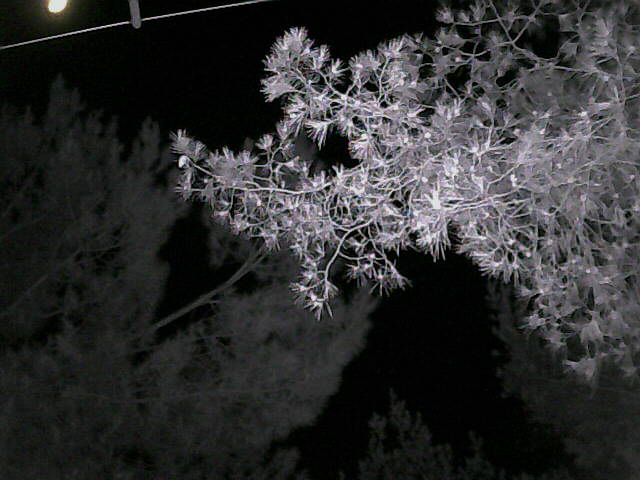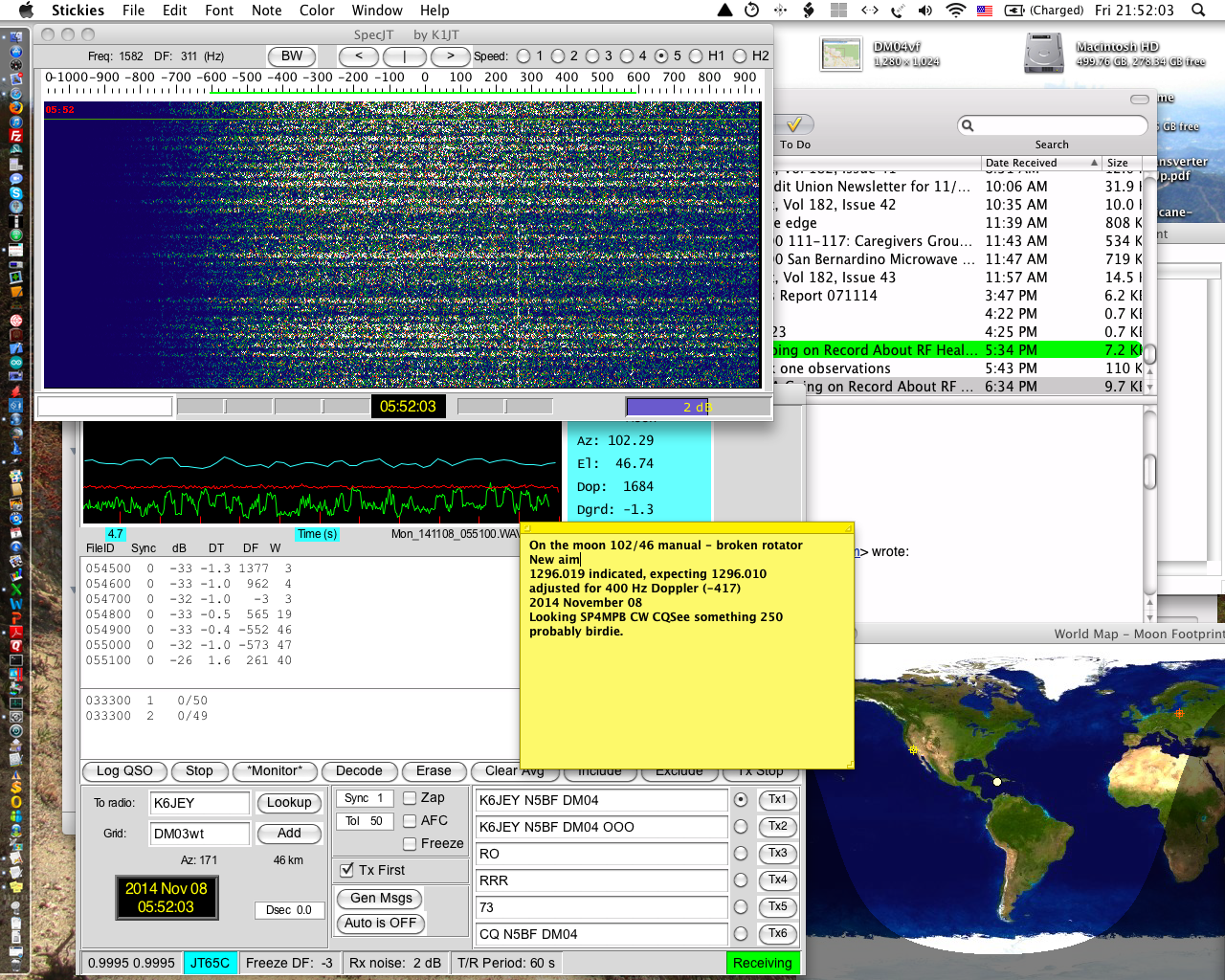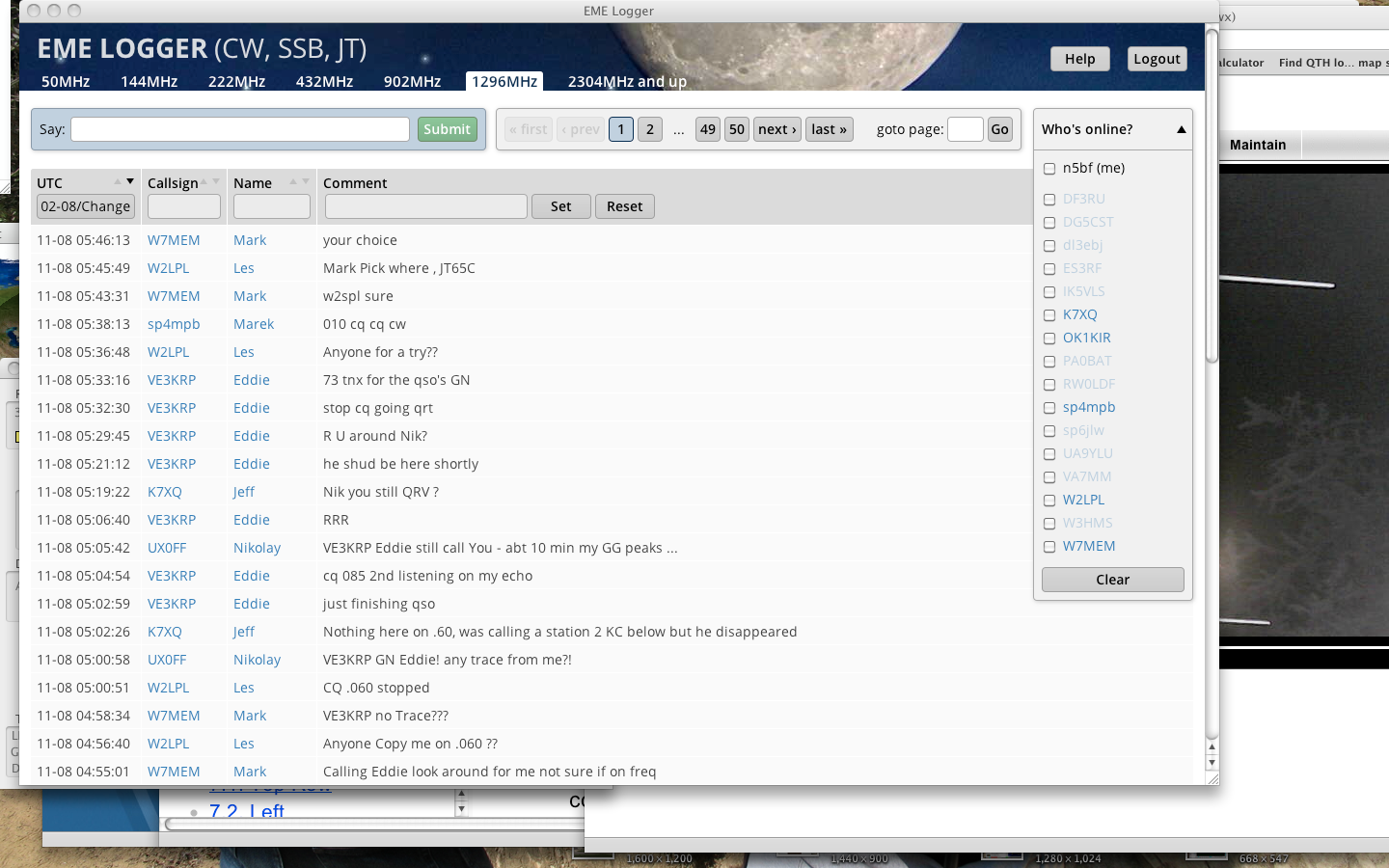The story of 23 cm EME from development through my first year of operation, August 2017, is told in the paper I submitted to Microwave Update for 2017 and the presentation that I gave. A version of the paper, slightly updated from the conference proceedings, and the presentation as given on October 27, 2017 are linked here:
2014 May 3
W6PQL 23CM2W500 Amplifier ready to ship. 1.5 W. drive to full output: 27 V. 48 A. This is a special order big brother to the 150 W. 23 cm Turn-Key Amplifier with four, rather than one active elements and requisite dividers and combiners.
2014 September
Modified 23cm35 to "rear" mount. Installed pointing a little up to have better access to moon positions.
Shown here under M^2 2M12
This is the control box at the base with the bias-T, two relays, and switching controls. Two Coaxes into the shack, one for transmit, the other for receive. When the Relcom and Totsu relays are off, it is in transmit mode with the preamp terminated and the transmit cable to the antenna. When active, the preamp is connected to the antenna and is powered.
Installed a cheap web cam pointed about the same direction as the antenna so I could directly see all the trees I was pointing through.
View from the webcam. Lots of trees.
Did not realize how minimal a station 1x23cm35 is even at 400 Watts. Did not realize how much effect the trees have on 23 cm signals. Made many unsucessful EME2 echo detection attempts, like this one, #16.
But there's the moon, still there, in thick trees.
A picture through the webcam at night showing its infrared features. That's the last element of the 2M12 at top and the moon. Trees are bright illuminated by IR.

2014 November
But the system throughout operation suffered this noise:
As seen in JT65 waterfall.

Not much luck in the November 8, 2017 ARRL EME contest. Lots of looking at plots like the above.
Although this might be a CW trace from SP4MPB per his HB9Q log entry shown in a screen capture.


Next weekend, borrowed Doug K6JEY's spectrum analyzer and determined that this periodic interference was not on 1296, but was somewhere in the IF chain, probably on that "great antenna" of long wires and diodes and such running up to the antenna to power the preamp and relay. After reconfiguration had a totally quiet 1296 as seen in this K6QPV beacon trace. K6QPV is in DM12mq, a couple hundred km south of here.

That's what it ought to look like.
But an echo test did not show anything that could be identified as echoes for sure.
Went to the K6JEY Sidewalk EME for the second weekend of the competition.
At this point I changed the approach to powering preamp and relay on the antenna, built an in-shack switch box to handle it all, gave up on fixed elevation, moved the 23cm35 back to the horizon, and said I'd resume working on this when I had azimuth / elevation control so I'd have more than several minutes a day to do tests.
Created 2013 October 26 - cbd
Last Updated 2017 December 23 - cbd
(c) Courtney Duncan 2013, 2014, 2017